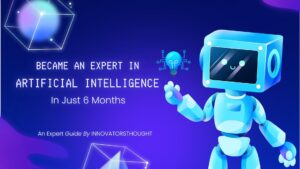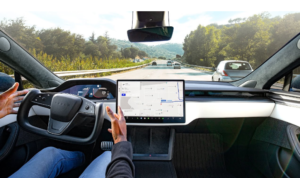How to learn Python in 2024 step-by-step guide for beginners

If you are a beginner learning a programming language might seem like a daunting task, especially if you’re just starting your journey into the world of coding. However, the good news is that Python, a versatile and powerful language is often considered one of the easiest languages to learn, making it an excellent choice for beginners to learn Python in 2024.
also, Python is considered a Job Market Goldmine. Many companies seek Python developers for various roles, from web development to data analysis and machine learning and learning it can help you get these jobs
Although learning Python is not an overnight process I have created this step-by-step guide for you so you don’t have to waste your time searching for tutorials this guide will show you how to learn Python in the easiest way
Step 1: Identifying Common Challenges
Learning a programming language doesn’t have to be scary. In fact, if you have the right tools and help, it can be quite easy.
There are a lot of resources out there to learn Python but in my opinion, most of them make learning Python difficult than it is. Finding the right resource could be a huge challenge but don’t worry In this guide I will provide some best resources to start your journey with python
My Experience
When I began my journey in Python programming, I made some mistakes, such as trying to memorize the syntax, spending most of my time watching tutorials instead of practicing, and frequently switching from one course to another. These were the challenges I faced, and here’s how you can avoid them.
1. Don’t Memorize, Understand: Instead of trying to memorize the syntax, focus on understanding the logic and concepts behind the code
2. Practice Regularly: Instead of just watching the tutorials apply what you learn through hands-on coding. Practice is the key to mastering any programming language
3. Build Projects: Practical application is a fantastic way to reinforce your knowledge.
Step 2: Discover Your Sources of Motivation
Discovering your passions and finding motivation is key to personal and professional fulfillment. To kickstart this process, let’s explore a couple of areas you might find intriguing:
- Mobile Apps
- Game development
- Websites
- Data Science / ML (machine learning)
- Web Development
- Data Processing and Analysis

Simple Robot With Computer Vision And Python
Yes, you can make projects like this of your own just take some time to consider these options and see which one or two resonate most with your interests and aspirations. Finding your motivation often begins with discovering what truly excites you in your chosen field.
Step 3: Learn the basic syntax
Learning the basic syntax is a vital first step in picking up any programming language. Here are some excellent resources that I recommend to kickstart your learning journey toward python in 2024.
Python for Beginners (2024) – This free beginner’s Python course on Udemy is designed to cover all the essential basics you need to get started with Python programming. It’s a comprehensive resource that can provide you with a solid foundation
Python for Beginners – Learn Python in 1 Hour – A quick and engaging introduction that will walk you through the basic syntax of Python in just one hour.
Step 4: Setting up a development environment
Before you dive into Python programming, you need to set up your development environment. A development environment includes the tools and software you’ll use to write, test, and run Python code. Follow these simple instructions to set up your Python environment
- Install Python: If you don’t have Python installed on your computer you’ll need to download and install it. Visit the official Python website to download the latest version for your operating system e.g. (Windows, macOS, or Linux). Make sure to check the box that says “Add Python to PATH” during installation.
- Choose a Text Editor or IDE: There are several choices for writing Python code but the one that I recommend is PyCharm which you can download by clicking Download
If you find the process challenging or prefer a visual guide, there’s an excellent YouTube tutorial available that can walk you through the entire setup process in a clear and easy-to-follow manner.
Recommended YouTube Tutorial: Python Environment Setup for Windows, Mac, Linux (Pip and Venv)
Step 5: Start Making projects
Creating projects is an effective way to grow your programming skills and gain practical experience. Here’s a list of small and easy Python projects that you can try to replicate to enhance your understanding of the language
- Python | Program to implement simple FLAMES game-make your first game with python
- Build A Mobile App With Python-make your first Python application
- Build Your First Machine Learning Project [Full Beginner Walkthrough] – Check out this YouTube guide to build your first machine learning project
10 Basic Project Ideas with python in 2024:
- To-Do List Application: Build a command-line to-do list manager that allows users to add, delete, and view tasks.
- Calculator: Create a basic calculator that can perform arithmetic operations like addition, subtraction, multiplication, and division.
- Hangman Game: Develop a text-based version of the classic Hangman game where players guess a word one letter at a time.
- Guess the Number: Write a program that generates a random number and asks the user to guess it, providing hints along the way.
- Simple Web Scraper: Build a script that extracts information from a website, such as news headlines or weather data, using libraries like BeautifulSoup and requests.
- Currency Converter: Create a currency converter that allows users to input an amount in one currency and convert it to another currency using real-time exchange rates (you can use an API for this).
- Password Generator: Develop a program that generates strong and random passwords for users with options for customizing password criteria.
- Basic Alarm Clock: Build a simple alarm clock that allows users to set alarms with specific times and sound notifications.
- File Organizer: Write a script that organizes files in a specified directory by categorizing them into folders based on file type or other criteria.
- Weather App: Create a program that retrieves and displays weather information for a user-specified location using a weather API.
Step 6: Don’t Give Up
Learning Python can be challenging at times. It’s natural to encounter difficulties and feel frustrated along the way. However, it’s crucial to remember that consistency is key to success in programming. Here are some tips to keep you motivated and on track:
- Take Breaks: Avoid burnout by taking regular breaks. Step away from your computer, go for a walk, or engage in other activities to clear your mind. Often, you’ll return with a fresh perspective
- Set Goals: Break your learning journey into manageable goals. Whether it’s completing a project, learning a specific Python library, or mastering a particular concept having clear objectives will keep you focused
- Celebrate Your Progress: Celebrate your achievements, no matter how small they may seem. Learning to program is a significant accomplishment, and each step forward is worth acknowledging
- Collaborate: Consider working on projects or challenges with others. Collaborative coding can be both enjoyable and educational, as you learn from different perspectives and techniques
Step 7: Use AI
AI-powered chatbots and virtual assistants, like GPT-3, are capable of answering Python-related questions, explaining concepts, and providing code examples. Learning Python in 2024 has become very easy with these AI models
Example Interaction:

FAQs while learning Python
1. What if get stuck on something
Getting stuck while learning is a common part of the learning process, especially when you are a beginner. Here’s what you can do
- Stack Overflow — An online community where people discuss programming issues. You can find Python-specific questions and ask for help.
- Python Official Documentation — The Python Official Documentation is a comprehensive resource provided by the Python community. It offers in-depth explanations of Python’s syntax, libraries, modules, and functions.
- ChatGPT by OpenAI — You can ask ChatGPT questions about Python concepts, code snippets, or debugging tips. It can provide explanations and examples.
2. Can I learn Python in 2024 for free?
Absolutely, you can learn Python for free! there are numerous free resources available to help you learn and master the language. Here are some of the free resources you can use:
- Online Tutorials: Many websites and platforms offer free Python tutorials, from beginner to advanced levels. Examples include Codecademy, W3Schools, and Python.org.
- Python Documentation: The official Python documentation is an extensive and free resource that provides in-depth information about the language’s syntax, libraries, and modules.
- YouTube: YouTube hosts a wealth of free Python tutorials and courses created by educators and developers. You can find videos on various Python topics, from basic concepts to advanced techniques
3. Can I learn Python with no coding experience
Yes, you can absolutely learn Python with no coding experience. Python is often recommended as an ideal programming language for beginners due to its simplicity, readability, and versatility.
4. Do you need a Python certification to find work?
Probably not, In the world of data science, having certifications doesn’t carry as much weight as you might think. What really matters to employers are your practical skills, not just pieces of paper that say you’re certified
5. Is it worth it to learn Python in 2024?.
Python has been in the programming scene for more than 30 years and its popularity keeps on rising. Thanks to its flexibility, user-friendliness, and the increasing demand for it, Python is expected to stay important and widely used for many more years
Conclusion
In conclusion, learning Python is an accessible and rewarding journey, especially for beginners. This versatile programming language offers a wealth of opportunities in various fields, from web development to data analysis and machine learning. While it may seem daunting at first, this step-by-step guide is here to simplify your learning process.
We’ve discussed the common challenges faced by learners and how to overcome them. It’s crucial to understand Python’s logic rather than memorizing syntax, practice regularly, and engage in hands-on coding. Building projects and finding your motivation by exploring areas like mobile apps, game development, or data science can make the learning experience exciting and fulfilling.
We’ve also covered setting up your development environment, ensuring you have the right tools to code effectively. For those who prefer visual guidance, a recommended YouTube tutorial simplifies this process.
Lastly, we’ve introduced a list of beginner-friendly Python projects to help you apply your newfound knowledge and skills. These projects range from simple games to practical applications, allowing you to gain real-world experience.
Remember, learning any programming language takes time and effort, but the journey is worth it. So, don’t give up! Stay persistent, set goals, and celebrate your progress. Additionally, you can harness the power of AI, like GPT-3, to assist you in your Python learning journey. Chatbots and virtual assistants can provide answers, explanations, and coding assistance, making your learning experience even more accessible and enjoyable.







